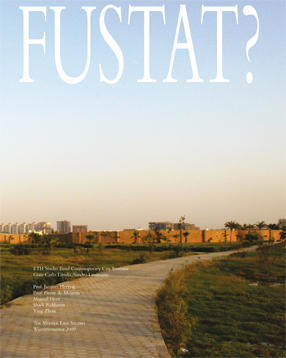Where is Fustat?

Students: Sandro Lussmann, Gian-Carlo Tibolla
Location: Cairo
Date: October, 2010
Type: Research project, student work
Fustat was founded by the Arab general Amr ibn al-As immediately following the Arab conquest of Egypt in AD 641. Its roots though go back to a roman fortress, called the ‘Babylon Fortress’ built by Romans during the 6th or 5th century BC and a town of the same name which gained importance under emperor Augustus. Fustat is thus the oldest neighborhood of Cairo in the post-pharaonic era and the origin of the contemporary city. Originally built close to the Nile (with the river changing its course over time and moving to the west) Fustat’s growth was marked by a then standard principle of urban development where individual sectors were established and built by individual clans or families, creating a tightly knit, semi-planned urban fabric of distinct quarters. The remains of the roman fortress, the Coptic hanging church dating back to the 3rd century and the Mosque of Amr ibn al-As accentuate the city and give evidence of its very rich and diverse urban history.
Today Fustat is firmly inscribed into the typical itineraries of visiting tourists. The above mentioned landmarks feature high in any guidebook and hence an elaborate tourist infrastructure has developed tying these spots and their respective eras together, resulting in a dense and palimpsest-like perception of the city. But these ancient and classical highlights represent only one side of Fustat. Just a few meters away visitors would walk into neighborhoods marked either by plain and austere commercial development or areas of informality. Sitting almost side by side with the tourist destinations, visitors are often quite unaware of Fustat’s ‘Other’ and its close proximity. More recently a number of official organizations and art institutions have started establishing their bases in Fustat adding even further diversity to Cairo’s most ancient quarter.
The topic will look at the urban conjunction of classical and historical elements with tourist infrastructure and its close proximity to informal elements. How do these different layers of Fustat coexist, sharing or dividing the urban space? Is it a neighborhood of ‘parallel worlds’ or one where via a ‘trickle down’- effect lower income groups can benefit from national and international tourists? Did the original development strategy of separate ‘clan-quarters’ during the Arab conquest leave any traces in today’s urban fabric? What is the role of religion and its public expression in a neighborhood marked by strong differences? Speculate on the future of Fustat.
Download the Book PDF

